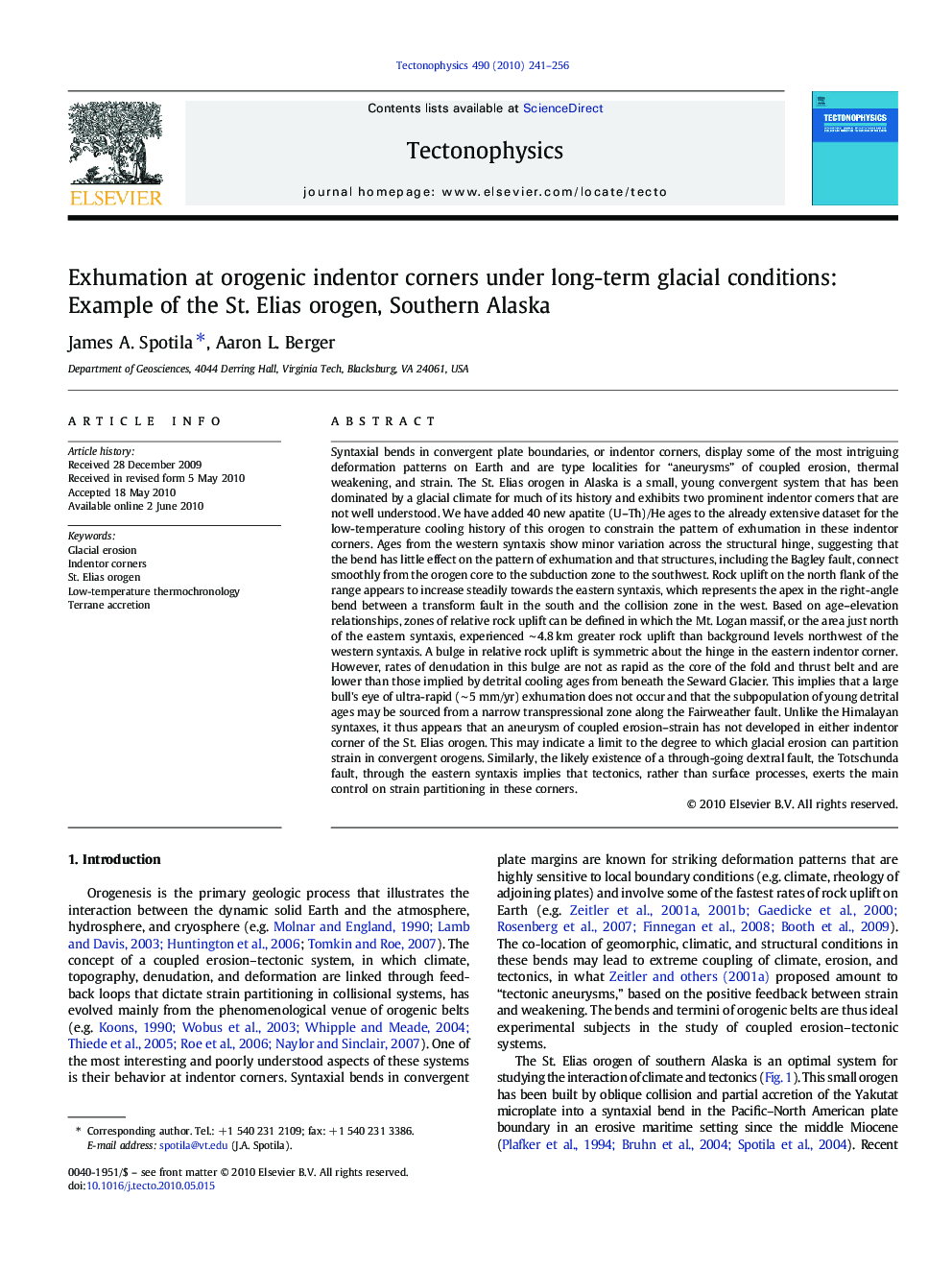| کد مقاله | کد نشریه | سال انتشار | مقاله انگلیسی | نسخه تمام متن |
|---|---|---|---|---|
| 4693456 | 1636864 | 2010 | 16 صفحه PDF | دانلود رایگان |

Syntaxial bends in convergent plate boundaries, or indentor corners, display some of the most intriguing deformation patterns on Earth and are type localities for “aneurysms” of coupled erosion, thermal weakening, and strain. The St. Elias orogen in Alaska is a small, young convergent system that has been dominated by a glacial climate for much of its history and exhibits two prominent indentor corners that are not well understood. We have added 40 new apatite (U–Th)/He ages to the already extensive dataset for the low-temperature cooling history of this orogen to constrain the pattern of exhumation in these indentor corners. Ages from the western syntaxis show minor variation across the structural hinge, suggesting that the bend has little effect on the pattern of exhumation and that structures, including the Bagley fault, connect smoothly from the orogen core to the subduction zone to the southwest. Rock uplift on the north flank of the range appears to increase steadily towards the eastern syntaxis, which represents the apex in the right-angle bend between a transform fault in the south and the collision zone in the west. Based on age–elevation relationships, zones of relative rock uplift can be defined in which the Mt. Logan massif, or the area just north of the eastern syntaxis, experienced ∼ 4.8 km greater rock uplift than background levels northwest of the western syntaxis. A bulge in relative rock uplift is symmetric about the hinge in the eastern indentor corner. However, rates of denudation in this bulge are not as rapid as the core of the fold and thrust belt and are lower than those implied by detrital cooling ages from beneath the Seward Glacier. This implies that a large bull's eye of ultra-rapid (∼ 5 mm/yr) exhumation does not occur and that the subpopulation of young detrital ages may be sourced from a narrow transpressional zone along the Fairweather fault. Unlike the Himalayan syntaxes, it thus appears that an aneurysm of coupled erosion–strain has not developed in either indentor corner of the St. Elias orogen. This may indicate a limit to the degree to which glacial erosion can partition strain in convergent orogens. Similarly, the likely existence of a through-going dextral fault, the Totschunda fault, through the eastern syntaxis implies that tectonics, rather than surface processes, exerts the main control on strain partitioning in these corners.
Journal: Tectonophysics - Volume 490, Issues 3–4, 30 July 2010, Pages 241–256